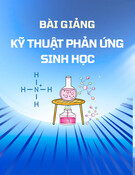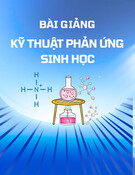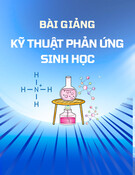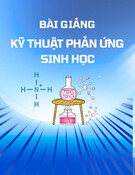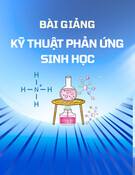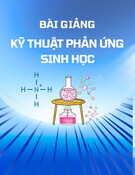
Academic Editors: Annalisa De
Palma, Anna Spagnoletta and
Giovanni Lentini
Received: 10 December 2024
Revised: 27 January 2025
Accepted: 27 January 2025
Published: 6 February 2025
Citation: Garcia-Quinto, E.; Guisan,
J.M.; Fernandez-Lorente, G. Use of
Ionic Liquids in the Enzymatic
Synthesis of Structured
Docosahexaenoic Acid
Lyso-Phospholipids. Molecules 2025,
30, 728. https://doi.org/10.3390/
molecules30030728
Copyright: © 2025 by the authors.
Licensee MDPI, Basel, Switzerland.
This article is an open access article
distributed under the terms and
conditions of the Creative Commons
Attribution (CC BY) license
(https://creativecommons.org/
licenses/by/4.0/).
Article
Use of Ionic Liquids in the Enzymatic Synthesis of Structured
Docosahexaenoic Acid Lyso-Phospholipids
Ernestina Garcia-Quinto 1, Jose M. Guisan 2and Gloria Fernandez-Lorente 1,*
1Laboratory of Microbiology and Food Biocatalysis, Institute of Food Science Research (CIAL, CSIC-UAM),
Nicolás Cabrera, 9, UAM Campus, Cantoblanco, 28049 Madrid, Spain; ernestina.garcia@csic.es
2Department of Biocatalysis, Institute of Catalysis and Petrochemistry (ICP, CSIC), Marie Curie, 2, UAM
Campus, Cantoblanco, 28049 Madrid, Spain; jmguisan@icp.csic.es
*Correspondence: g.f.lorente@csic.es
Abstract: Recent studies have shown that DHA supplementation in the form of phospho-
lipids effectively increases DHA levels in the brain, including DHA lysophospholipids.
This research explores a method to produce DHA lysophosphatidylcholine (DHA-LPC)
using lipases and phospholipases immobilized on Immobeads-C18 with maximal enzyme
loading. The esterification of glycerophosphatidylcholine (GPC) and DHA was studied
with ionic liquids as alternatives to traditional solvents, with 1-methyl-3-octylimidazolium
tetrafluoroborate (MOIM-BF
4
) providing the highest yield due to its ability to increase the
solubility of GPC. The reaction parameters were modified to establish a molar ratio of GPC
to DHA of 1/10. A maximum DHA-LPC yield of 80% was achieved in 48 h, with a forma-
tion rate of 20.06 (mg/mL.h)
×
g. The Quara
®
LowP biocatalyst (QlowP-C18) maintained
100% activity during the first three cycles and produced 788 mg of DHA lysophospholipid.
The use of 50% MOIM-BF
4
improved the stability of the biocatalyst, and NMR confirmed
that the product was the sn1-DHA-LPC isomer.
Keywords: DHA lysophosphatidylcholine (DHA-LPC); immobilized lipases; ionic liquids;
esterification; 1-methyl-3-octylimidazolium tetrafluoroborate (MOIM-BF4)
1. Introduction
Long-chain
ω
-3 PUFAs, especially DHA, play a fundamental role in the development
and maintenance of the nervous system. In recent years, their consumption has been
shown to be associated with a lower risk of developing neurodegenerative diseases [
1
,
2
].
Several studies have observed that DHA, when supplied in the form of phospholipids, has
a significantly higher bioavailability than in the form of triglycerides [
3
]. This is because
phospholipids (PL) follow a simpler digestion and distribution process than triglycerides
(TAG) [
4
]. Due to their amphipathic nature, PLs have higher solubility in aqueous media
and can diffuse through the lipid bilayers of cells. In particular, several authors have
pointed out that the lysophosphatidylcholine molecule is the preferred transporter of DHA
to cross the blood–brain barrier and deliver the fatty acid to the brain [5–7].
Lipases and phospholipases have generated great interest in the food industry for
their applications as biocatalysts in the modification and production of lipids structured
with
ω
-3 polyunsaturated fatty acids However, there are few examples in the literature on
the synthesis of phospholipids using immobilized lipases/phospholipases. Mainly, the
synthesis of lysophosphatidylcholine (LPC) from glycerophosphatidylcholine (GPC) is
described, either by direct esterification with free fatty acids [
8
,
9
] or by transesterification
with fatty acid vinyl esters [10–12]. In a recent study, DHA PLs were synthesized through
Molecules 2025,30, 728 https://doi.org/10.3390/molecules30030728

Molecules 2025,30, 728 2 of 17
transesterification mediated by a lipase soluble in aqueous phases. Lipase B from Candida
antarctica (CALB) stood out as the best biocatalyst, achieving a DHA incorporation of 34.8%
and a PL yield of 80% [
13
]. One of the problems when modifying GPC in anhydrous
solvent-free systems is its low solubility in the reaction medium since it is a highly polar
molecule, easily soluble in water and polar solvents, but almost insoluble in completely
anhydrous organic media. Moreover, the instability of enzymes immobilized in anhydrous
hydrophobic media (e.g., oils) [
14
] may be an additional drawback for the development of
enzymatic processes in solvent-free systems. Therefore, highly active and stable biocata-
lysts that can withstand various reaction conditions are necessary to achieve high synthetic
yields in the synthesis of structured DHA phospholipids [
15
]. Adsorption of lipases on
highly hydrophobic supports involves the open form of lipases, allowing for the immobi-
lization, purification, hyperactivation [
16
], and stabilization of lipases in a single step [
17
].
Abreu Silveira et al. increased the activity of TLL (Thermomyces lanuginosus lipase) 17-fold
through interfacial adsorption on various hydrophobic supports [
14
]. Cejudo-Sánchez et al.
stabilized RML (Rhizomucor miehei lipase) by more than 100-fold compared to the soluble
form of the enzyme [
18
]. In a recent investigation, García-Quinto et al. demonstrated that
NS40 and PALA lipases, immobilized by hydrophobic adsorption on the Immobeads-C18
support, achieved 100% DHA release in only 24 h, due to their high enzyme loading [19].
The incorporation of organic solvents into anhydrous reaction systems is often pre-
sented as an effective option to solubilize substrates with different polarities, achieving
adequate homogenization of the medium [
20
]. In a study on the enzymatic synthesis
of lysophosphatidylcholine, it was observed that the addition of small amounts of the
solvent dimethylformamide, which mimics water, significantly improved the reaction rate
and product yield [
8
]. However, many common organic solvents can denature proteins,
distorting the structure of lipases and affecting their activity and stability [21].
As an alternative to conventional chemical solvents, ionic liquids (ILs) have been
developed as a new class of environmentally friendly solvents. ILs, also known as liquid
salts, are substances that remain liquid at relatively low temperatures and are composed
of positive and negative ions [
22
]. ILs are recognized as “green solvents” due to their low
volatility and properties such as chemical inertness, thermal stability, ease of degradation,
non-toxicity, non-flammability, reusability, and ease of separation and purification of
reaction products. In addition, they have a wide boiling point range [
23
]. These properties
reduce waste generation, making the processes more economical and environmentally
friendly [24,25].
According to the literature, enzymes in the presence of ILs can show enhanced ac-
tivity, stability, and selectivity compared to conventional organic solvents [
26
,
27
]. Nasci-
mento et al. studied how lipase from Aspergillus niger showed enhanced activity in ILs
with a short cationic alkyl side chain, namely 1-butylimidazolium chloride ([bmim]Cl)
and 1-hexyl-3-methylimidazolium chloride ([hmim]Cl) [
28
]. In another study, the lipase-
catalyzed transesterification reaction was analyzed, showing that both the reaction rate and
enantioselectivity were dependent on the IL anion. The best results were obtained with
1-butyl-3-methylimidazolium tetrafluoroborate ([C4mim][BF4]) and hexafluorophosphate
salt ([C4mim][PF6]) [29].
As illustrated in Figure 1, this study investigates the addition of various ILs to the
esterification reaction of GPC and DHA catalyzed by immobilized lipases. Unlike previous
investigations, which have not explored the systematic use of ILs in this type of reaction,
this work aims to evaluate their potential to improve the performance of the process. The
main innovation lies in the use of ILs to improve GPC solubility, stabilize the biocatalyst,
and promote a more sustainable process. It also aims to optimize the amount of GPC and IL
to minimize the excess of DHA in the medium, reducing waste and improving profitability.

Molecules 2025,30, 728 3 of 17
Molecules 2025, 30, x FOR PEER REVIEW 3 of 17
biocatalyst, and promote a more sustainable process. It also aims to optimize the amount
of GPC and IL to minimize the excess of DHA in the medium, reducing waste and impro-
ving profitability.
Figure 1. Schematic representation of the enzymatic synthesis reaction of DHA-structured phospho-
lipids catalyzed by immobilized and regioselective lipases and/or phospholipases in anhydrous me-
dia containing ionic liquids.
2. Results and Discussion
2.1. Immobilization of Lipases/Phospholipases on Hydrophobic Support with Maximum Enzyme
Loading
The five lipases and two phospholipases were immobilized on the Immobeads-C18
support by hydrophobic interfacial adsorption, aiming for the highest possible enzyme
loading. The enzyme loading per gram of support varied depending on the enzyme and
the immobilization yield achieved. TLL, PALA, and NS40 achieved 180 mg of protein per
gram of support, with an immobilization yield of 90% after 72 h. CALB, NOVO, and phos-
pholipase LECI showed a final enzyme loading of 170 mg per gram of support after 48 h
of continuous agitation. Finally, phospholipase QlowP reached a loading of 160 mg per
gram of support after 72 h.
2.2. Use of Ionic Liquids as Reaction Media for the Synthesis of DHA Phospholipids
In this study, we investigated the incorporation of 30% ionic liquid into the reaction
medium for the synthesis of DHA phospholipids, with the aim of addressing the limita-
tions encountered in solvent-free reactions previously explored by our research group
[30]. Previous research has established that, under solvent-free conditions, the predomi-
nant product formed is the di-substituted phospholipid. However, our results demon-
strate that the addition of 30% MOIM-BF4 significantly alters the course of the esterifica-
tion reaction. For this purpose, MOIM-BF4 ionic liquid was initially selected, and the es-
terification reaction was carried out using five different lipases and two phospholipases,
all immobilized on the Immobeads-C18 support with maximum enzyme loading.
As illustrated in Figure 2, the presence of the ionic liquid facilitates the synthesis of
the mono-substituted phospholipid, DHA-LPC, but does not promote its conversion to
the di-substituted phospholipid. This effect is consistently observed in all the enzymes
studied, suggesting that the incorporation of the ionic liquid into the reaction medium
induces conformational changes in the enzymes. Among the biocatalysts evaluated, the
phospholipase QlowP-C18 showed superior performance, achieving 80% conversion to
Figure 1. Schematic representation of the enzymatic synthesis reaction of DHA-structured phospho-
lipids catalyzed by immobilized and regioselective lipases and/or phospholipases in anhydrous
media containing ionic liquids.
2. Results and Discussion
2.1. Immobilization of Lipases/Phospholipases on Hydrophobic Support with Maximum
Enzyme Loading
The five lipases and two phospholipases were immobilized on the Immobeads-C18
support by hydrophobic interfacial adsorption, aiming for the highest possible enzyme
loading. The enzyme loading per gram of support varied depending on the enzyme and
the immobilization yield achieved. TLL, PALA, and NS40 achieved 180 mg of protein
per gram of support, with an immobilization yield of 90% after 72 h. CALB, NOVO, and
phospholipase LECI showed a final enzyme loading of 170 mg per gram of support after
48 h
of continuous agitation. Finally, phospholipase QlowP reached a loading of 160 mg
per gram of support after 72 h.
2.2. Use of Ionic Liquids as Reaction Media for the Synthesis of DHA Phospholipids
In this study, we investigated the incorporation of 30% ionic liquid into the reaction
medium for the synthesis of DHA phospholipids, with the aim of addressing the limitations
encountered in solvent-free reactions previously explored by our research group [
30
]. Previ-
ous research has established that, under solvent-free conditions, the predominant product
formed is the di-substituted phospholipid. However, our results demonstrate that the
addition of 30% MOIM-BF
4
significantly alters the course of the esterification reaction. For
this purpose, MOIM-BF
4
ionic liquid was initially selected, and the esterification reaction
was carried out using five different lipases and two phospholipases, all immobilized on the
Immobeads-C18 support with maximum enzyme loading.
As illustrated in Figure 2, the presence of the ionic liquid facilitates the synthesis of
the mono-substituted phospholipid, DHA-LPC, but does not promote its conversion to
the di-substituted phospholipid. This effect is consistently observed in all the enzymes
studied, suggesting that the incorporation of the ionic liquid into the reaction medium
induces conformational changes in the enzymes. Among the biocatalysts evaluated, the
phospholipase QlowP-C18 showed superior performance, achieving 80% conversion to
DHA-LPC within 48 h, whereas the other enzymes demonstrated significantly lower
conversions; at best, PALA-C18 only achieved 31% conversion in the same time period.

Molecules 2025,30, 728 4 of 17
Molecules 2025, 30, x FOR PEER REVIEW 4 of 17
DHA-LPC within 48 h, whereas the other enzymes demonstrated significantly lower con-
versions; at best, PALA-C18 only achieved 31% conversion in the same time period.
Figure 2. Reaction yield for DHA-LPC catalyzed by several lipases and phospholipases immobilized
on Immobeads-C18 in 30% MOIM-BF4 medium: TLL (dark blue), CALB (orange), NS40 (gray),
PALA (yellow), NOVO (light blue), LECI (green), and QlowP (red). Reaction conditions: amount of
derivative: 10% w/w of total substrate weight, molar ratio of substrate: 1 mole of GPC to 14 moles
of DHA (1/14), temperature: 60 °C, and stirring speed: 150 rpm.
Considering these results, QlowP-C18 is confirmed to be the most promising bioca-
talyst for the synthesis of monosubstituted DHA phospholipids due to its characteristics
as a phospholipase [31], its natural substrate being a phospholipid. Unlike LECI phospho-
lipase, QlowP is a novel thermostable and acid-stable phospholipase from Talaromyces
leycettanus, produced in Aspergillus niger. Moreover, the thermal denaturation tempera-
ture of QlowP is 17 °C higher than that of LECI phospholipase, making it active at 70 °C
[32]. Therefore, these characteristics suggest that QlowP-C18 could be the most suitable
and active enzyme to efficiently catalyze the synthesis of monosubstituted DHA phos-
pholipids under conditions of elevated temperature (60 °C), acidic environments (DHA)
and with ionic liquid (MOIM-BF4).
2.3. Effect of Ionic Liquids on the Synthesis of Structured Phospholipids
The addition of 30% of various ionic liquids to the esterification reaction of GPC and
DHA catalyzed by QlowP-C18, which is the most active enzyme derivative previously
validated, was investigated. Four ionic liquids (EMIM-Cl, EMIM-Otf, EMIM-Ac, and
EMIM-AlCl4) did not allow the enzyme to catalyze the reaction efficiently due to their
high viscosity or low solubility in the reaction medium, leading to their exclusion from
the study. In contrast, the remaining four ionic liquids effectively facilitated the catalysis
of the reaction, as shown in Figure 3. According to the results, MOIM-BF4 is the most sui-
table ionic liquid for the esterification reaction, as it provides the highest yield of DHA-
LPC, reaching 60% at 24 h as the only product of the reaction.
0
10
20
30
40
50
60
70
80
90
100
0 6 12 18 24 30 36 42 48
DHA-LPC yield (%)
Reaction time (h)
Figure 2. Reaction yield for DHA-LPC catalyzed by several lipases and phospholipases immobilized
on Immobeads-C18 in 30% MOIM-BF
4
medium: TLL (dark blue), CALB (orange), NS40 (gray),
PALA (yellow), NOVO (light blue), LECI (green), and QlowP (red). Reaction conditions: amount of
derivative: 10% w/w of total substrate weight, molar ratio of substrate: 1 mole of GPC to 14 moles of
DHA (1/14), temperature: 60 ◦C, and stirring speed: 150 rpm.
Considering these results, QlowP-C18 is confirmed to be the most promising biocat-
alyst for the synthesis of monosubstituted DHA phospholipids due to its characteristics
as a phospholipase [
31
], its natural substrate being a phospholipid. Unlike LECI phos-
pholipase, QlowP is a novel thermostable and acid-stable phospholipase from Talaromyces
leycettanus, produced in Aspergillus niger. Moreover, the thermal denaturation temperature
of QlowP is 17
◦
C higher than that of LECI phospholipase, making it active at 70
◦
C [
32
].
Therefore, these characteristics suggest that QlowP-C18 could be the most suitable and
active enzyme to efficiently catalyze the synthesis of monosubstituted DHA phospholipids
under conditions of elevated temperature (60
◦
C), acidic environments (DHA) and with
ionic liquid (MOIM-BF4).
2.3. Effect of Ionic Liquids on the Synthesis of Structured Phospholipids
The addition of 30% of various ionic liquids to the esterification reaction of GPC and
DHA catalyzed by QlowP-C18, which is the most active enzyme derivative previously
validated, was investigated. Four ionic liquids (EMIM-Cl, EMIM-Otf, EMIM-Ac, and
EMIM-AlCl
4
) did not allow the enzyme to catalyze the reaction efficiently due to their
high viscosity or low solubility in the reaction medium, leading to their exclusion from the
study. In contrast, the remaining four ionic liquids effectively facilitated the catalysis of the
reaction, as shown in Figure 3. According to the results, MOIM-BF
4
is the most suitable
ionic liquid for the esterification reaction, as it provides the highest yield of DHA-LPC,
reaching 60% at 24 h as the only product of the reaction.

Molecules 2025,30, 728 5 of 17
Molecules 2025, 30, x FOR PEER REVIEW 5 of 17
Figure 3. Effect of the addition of 30% of various ionic liquids on the 24-h reaction yield for DHA-
LPC catalyzed by QlowP-C18, with a substrate molar ratio of 1/14 (GPC/DHA) and at 60 °C.
On the other hand, the polarity of the reaction medium is crucial as it affects enzyme
activity and substrate solubility. According to the literature, highly polar ionic liquids
could affect enzyme stability by removing the essential water layer [33,34] or interacting
with it to inactivate the enzyme [35]. For example, ionic liquids with BF4−, which are highly
hydrophilic, may have this effect. However, it is important to note that these results have
been observed predominantly in studies with enzymes in solution. In our study, we used
immobilized enzymes, which prevent denaturation and thus ensure greater stability un-
der the experimental conditions. In contrast, ionic liquids containing PF6−, which have hy-
drophobic characteristics, stabilize lipases by protecting their hydration layer [27] or by
inducing a beneficial conformational change [26].
Furthermore, based on the results shown in Figure 3, it appears that shorter alkyl
substituents in the solvent, such as a methyl group, correlate with lower viscosity, as they
create a less compact structure and facilitate molecular mobility, thus improving reaction
performance. In this regard, ionic liquids with a methyl substituent are preferred over
those with an ethyl substituent, which, in turn, are favored over those with a butyl subs-
tituent. In this context, the methyl group of the positively charged ion, combined with the
hydrophilic nature provided by the counterion BF4⁻, could enhance the solubility of GPC,
consequently increasing the formation of the DHA-LPC product.
2.4. Effect of the Percentage of MOIM-BF4 on DHA Lysophospholipid Synthesis
Given the positive effect observed with the addition of MOIM-BF4 in the previous
section, different percentages of this ionic liquid were investigated. The objective was to
maximize the solubility of GPC and reduce the amount of DHA used in the reaction me-
dium, making the process more economically viable. Table 1 presents the initial reaction
rates obtained for the formation of DHA lysophospholipid as a function of the percentage
of MOIM-BF4 used. It also shows the molar ratio between the substrates (GPC/DHA) in
each case, indicating that with a higher percentage of ionic liquid, less DHA is used rela-
tive to GPC.
60
37
10
6
0
20
40
60
80
100
MOIM-BF4 EMIM-PF6 EMIM-BF4 BMIM-BF4
DHA-LPC yield (%)
Ionic liquids
Figure 3. Effect of the addition of 30% of various ionic liquids on the 24-h reaction yield for DHA-LPC
catalyzed by QlowP-C18, with a substrate molar ratio of 1/14 (GPC/DHA) and at 60 ◦C.
On the other hand, the polarity of the reaction medium is crucial as it affects enzyme
activity and substrate solubility. According to the literature, highly polar ionic liquids
could affect enzyme stability by removing the essential water layer [
33
,
34
] or interacting
with it to inactivate the enzyme [
35
]. For example, ionic liquids with BF
4−
, which are
highly hydrophilic, may have this effect. However, it is important to note that these results
have been observed predominantly in studies with enzymes in solution. In our study, we
used immobilized enzymes, which prevent denaturation and thus ensure greater stability
under the experimental conditions. In contrast, ionic liquids containing PF
6−
, which have
hydrophobic characteristics, stabilize lipases by protecting their hydration layer [
27
] or by
inducing a beneficial conformational change [26].
Furthermore, based on the results shown in Figure 3, it appears that shorter alkyl
substituents in the solvent, such as a methyl group, correlate with lower viscosity, as they
create a less compact structure and facilitate molecular mobility, thus improving reaction
performance. In this regard, ionic liquids with a methyl substituent are preferred over those
with an ethyl substituent, which, in turn, are favored over those with a butyl substituent. In
this context, the methyl group of the positively charged ion, combined with the hydrophilic
nature provided by the counterion BF
4−
, could enhance the solubility of GPC, consequently
increasing the formation of the DHA-LPC product.
2.4. Effect of the Percentage of MOIM-BF4on DHA Lysophospholipid Synthesis
Given the positive effect observed with the addition of MOIM-BF
4
in the previous
section, different percentages of this ionic liquid were investigated. The objective was
to maximize the solubility of GPC and reduce the amount of DHA used in the reaction
medium, making the process more economically viable. Table 1presents the initial reaction
rates obtained for the formation of DHA lysophospholipid as a function of the percentage
of MOIM-BF
4
used. It also shows the molar ratio between the substrates (GPC/DHA) in
each case, indicating that with a higher percentage of ionic liquid, less DHA is used relative
to GPC.

![Tổng hợp cấu trúc lai giáp cạnh 5H-thiazolo[2′,3′:2,3]imidazo[4,5-b]indole bằng phản ứng ghép cặp C-N liên tiếp xúc tác đồng](https://cdn.tailieu.vn/images/document/thumbnail/2025/20250330/vimitsuki/135x160/2451743340007.jpg)


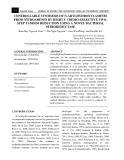
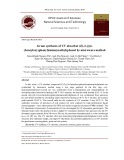
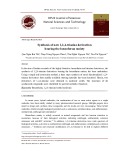
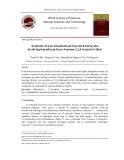
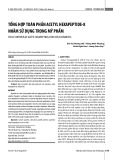
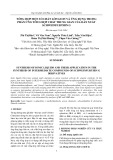
![Nghiên cứu tổng hợp dẫn xuất thế thieno[3,2-b]thiophen bằng phản ứng xúc tác palađi](https://cdn.tailieu.vn/images/document/thumbnail/2024/20240929/xuanphongdacy09/135x160/8461727545047.jpg)



![Bài tập Đa dạng thế giới sống [kèm đáp án/ hướng dẫn giải]](https://cdn.tailieu.vn/images/document/thumbnail/2025/20251123/thaohoang9203@gmail.com/135x160/5861763951302.jpg)
